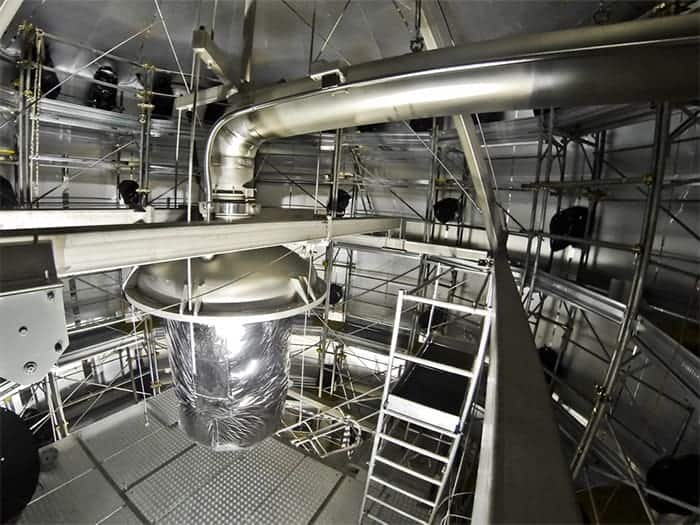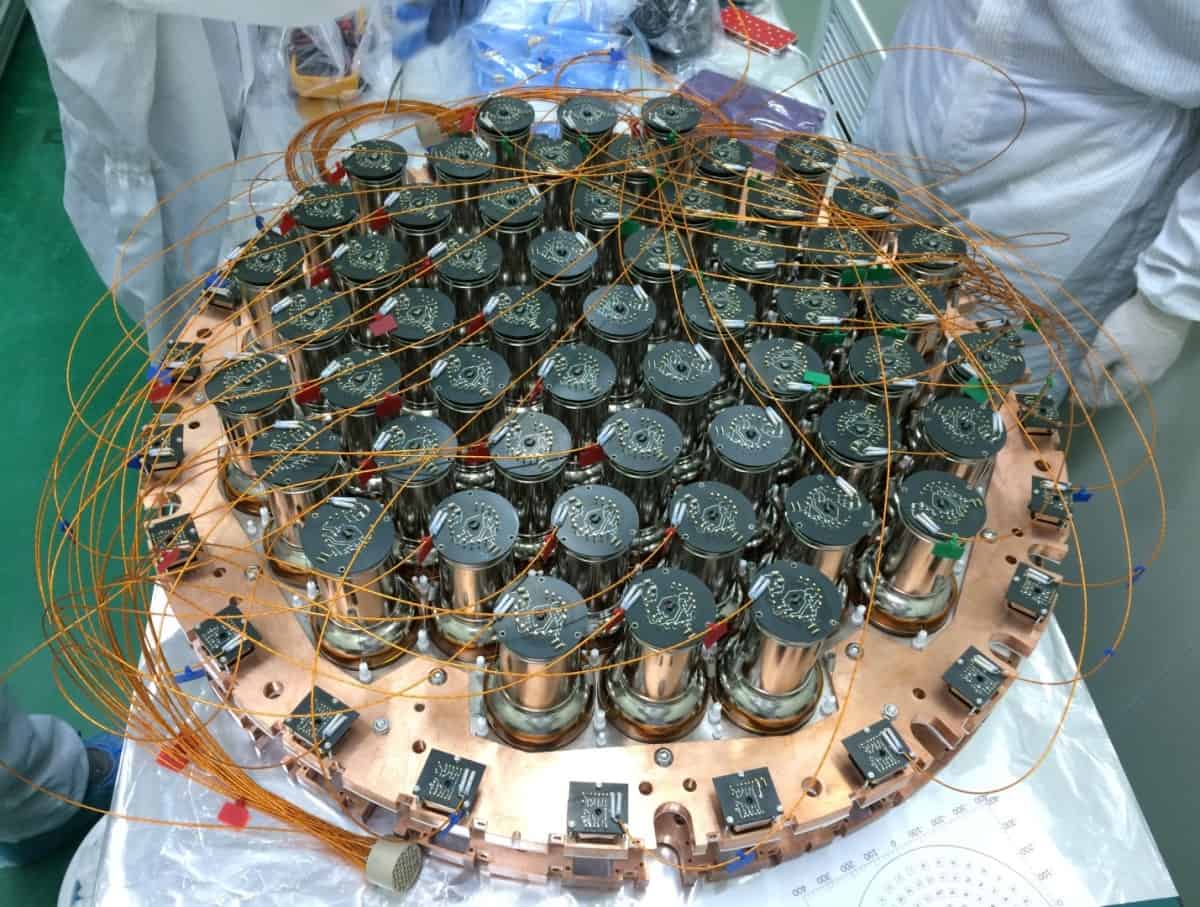
New data from the PandaX-II particle detector in China leave open the possibility that the XENON1T experiment in Italy has found evidence of new physics. In June 2020 researchers working on XENON1T announced the detection of around 50 events above background levels and concluded that hypothetical solar axions or very magnetic neutrinos might be responsible. The new results from PandaX-II are consistent with these hypotheses but further work will be needed to settle the issue.
XENONIT was built to hunt for a type of dark matter known as weakly interacting massive particles (WIMPs). Housed under a mountain at Italy’s Gran Sasso National Laboratory, it contained 3.5 tonne of liquid xenon and operated between 2016-2018. Like other experiments of its type, it was designed to pick up the tiny flashes of light generated when WIMPs in the “halo” of dark matter thought to envelop the Milky Way collide with xenon nuclei.
The events reported in 2020 involved electron, rather than nuclear, recoils. Elena Aprile of Columbia University in the US and colleagues reported 53±15 such recoils at low energy that they could not tie to other identifiable sources of background (these events themselves being considered noise in the search for WIMPs). Careful not to claim any discovery, they instead laid out several possible explanations for the observation.
Two novelties
These explanations included two novelties associated with particles arriving from the Sun – either hypothetical particles known as axions (postulated originally to fix a problem with the strong nuclear force) or neutrinos with a greater magnetic moment than previously observed. Another possibility, they said, was “bosonic dark matter”, which would be absorbed, rather than scattered, by the xenon nuclei and cause electrons to be emitted.
However, as Aprile and colleagues pointed out, the events could also have had a more mundane explanation – the beta decay of tritium nuclei. This would come about when the few neutrons liberated from surrounding rock by cosmic rays create tritium by splitting xenon nuclei. Unlike other background processes, this remains a nuisance since its extent is not possible to estimate reliably.
Aprile and colleagues calculated that the tritium could account for the excess events with a statistical significance of 3.2σ – compared to 3.4σ, 3.2σ and 3.0σ for solar axions, neutrino magnetism and bosonic dark matter, respectively.
Dimmer white dwarfs
Despite their cautious presentation, these results caught the attention of both the public and fellow physicists. For example, theorists put forward several ways to overcome one obvious sticking point with the Sun-based hypotheses – that the flux of the particles involved would make white dwarf stars dimmer than they appear.

XENON1T may have detected something very interesting, or maybe not
In the latest work, Jianglai Liu of Shanghai Jiao Tong University and colleagues did an independent experimental check on the XENON1T results using the PandaX-II detector in the China Jinping Underground Laboratory in Sichuan, south-western China. Although PandaX-II contains just over half a tonne of xenon, the researchers ran their experiment for longer and acquired nearly half the data as their XENON1T counterparts.
The Chinese group had the advantage of being able to better characterize their background spectra, thanks to direct measurement or calibration. In part, this was done by twice injecting methane with one of its hydrogen atoms replaced by tritium into the target. With the two injections carried out three years apart, they say they were able to measure the energy spectrum of the tritium contamination within the experiment.
By in effect subtracting the background spectra of tritium, krypton and radon, the researchers were able to quantify any signals from putative solar axions or a high neutrino magnetic moment – the two theoretical possibilities that Liu says the group used as a “benchmark” in their work. As they report in Chinese Phsics Letters, they found that the remaining electron recoils were in fact consistent with the excess events seen by XENON1T. However, they could not fully endorse the earlier result given, they say, that their data were also consistent with a “background-only hypothesis”.
Detector upgrades
To try and establish whether some new physical process really has been observed, the Chinese researchers are increasing their detector mass to 6 tonne – meaning a sensitive target of 4 tonne – while lowering background rates. The upgraded detector is called PandaX-4T and should start taking data this year. Also coming online are an upgraded 8.3 tonne “XENONnT” as well as the 10 tonne LUX-ZEPLIN detector currently being installed in the Sanford Underground Research Facility in South Dakota, US.
According to Liu, the new measurements should yield a verdict soon. “A year of low background data taking from PandaX-4T would be able to offer a definitive answer to the XENON1T excess,” he says, although he adds that it remains to be seen just how low they can make the background.

Excitement grows over mysterious signal in dark-matter detector
One group already has an explanation for the XENON1T excess – and it does not rely on exotic new physics. Matthew Szydagis, Cecilia Levy and colleagues at the State University of New York at Albany used what is known as the noble element simulation technique to model background interactions within the Gran Sasso detector and found that around 30 decays of the isotope argon-37 would generate the observed excess.
Levy says that their hypothesis could be investigated by carrying out a thorough calibration of the XENON detector, adding that her group does not know where the argon might come from. Beyond that, she agrees that the observed excess should be scrutinized by the new round of larger experiments. “If it is due to a new particle, it should predictably scale with the more massive detectors,” she says, “and a signal should be clear.”
